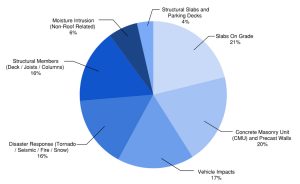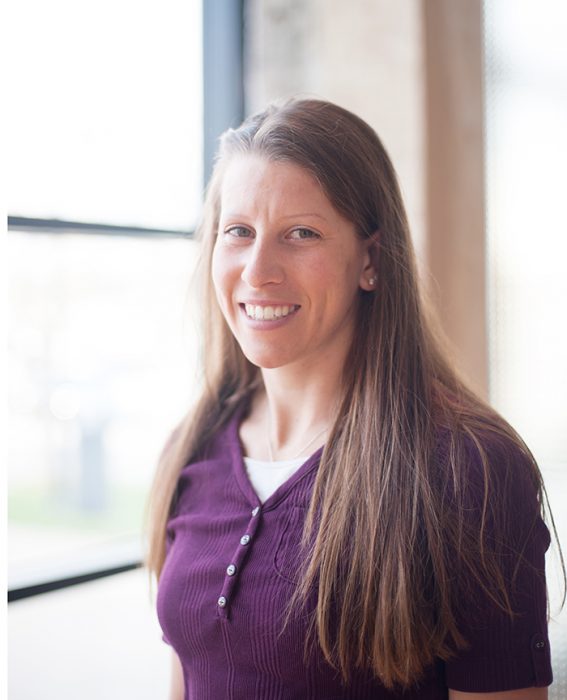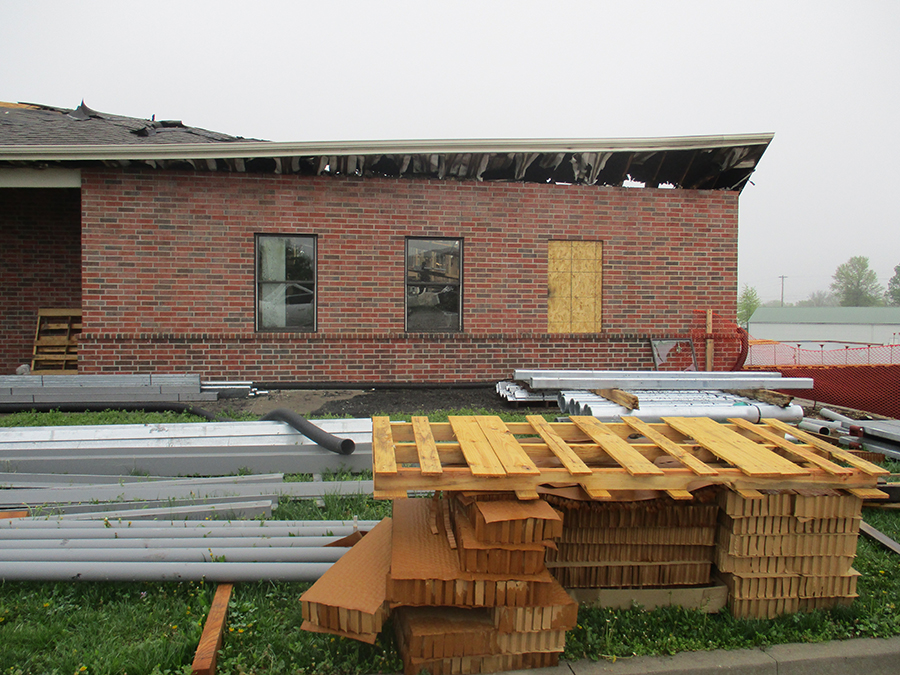In a previous post, I presented an overview of various routine forensic structural engineering projects our team tackles and broke down our forensics work to its core: evaluating damage to existing buildings based on client concerns. That exercise got me thinking: what is the most common type of damage we investigate? What are the top structure-related issues that alarm our clients and prompt them to reach out for our professional opinion?
Because I’m a nerd (again, a cool nerd), I decided to run some data analytics to determine our most common structural forensics projects. In true forensic fashion, I collected, organized and interpreted a pile of data and ultimately discovered some surprising trends.
Before I get into my informal data analysis, I’d like to make a few disclaimers:
- This approximate percentage breakdown is based on a review of 550+ of our team’s day-to-day, non-volume, commercial forensics projects since 2013. This analysis is not intended to be a generalization of the forensic structural engineering field as a whole, or even Wallace Engineering as a whole, only a big picture overview of projects specific to our team’s day-to-day workflow.
- The categorization presented here should be interpreted as a broad reflection of client concerns. As potential projects come in, we sort them into one of several folders based on the client’s description of the problem. These folders were the rough basis for my analysis.
- Since the stats are based on issues identified by the client, this isn’t a perfect set-up, and there could be some overlap between categories. For instance, a project in “Vehicle Impact” could involve damage to a CMU wall, but the main client concern was the vehicle impact. Similarly, the root cause of damage for a project in the “Concrete Masonry Unit (CMU) / Precast Walls” category could end up being repeated truck impacts at a dock opening, but the main client concern was simply “damaged wall.”
Without further ado, the percentage breakdown and the top-four “big picture” revelations I learned regarding our team’s client-identified structural concerns and day-to-day forensic work :

Forensic Structural Engineering Project Breakdown
- Forensics is like a box of chocolates…..
Overall, we’ve seen quite a nice mix of projects! I went into this analysis thinking slab on grade damage would be the heavy favorite. This ended up being the top concern – but only by an extremely narrow margin. Interestingly, each of the top five categories comprise 16%-21% of our total forensics workflow.
- Watch your step!
Cracks and damage in slabs on grade did claim the top spot, coming in at 21% of our total forensic work. From our point of view, this type of damage doesn’t usually constitute a “structural” issue since the slabs should be fully supported by soil. However, cracks, widening joints, vertical differentials at cracks and joints, sloping, or spalling/deteriorating concrete can cause trip hazards or other issues for pedestrians, making this type of damage noticeable and a top priority to building owners.
- Look out for….vehicles?
Surprisingly, “Vehicle Impacts” cracks the top-three in our list of most common forensic projects, at 17%. The damage could range from a ding in an interior column from a forklift to a hole in a wall caused by a semi-truck. Depending on the type and intensity of the impact and properties of the structural element (i.e. load bearing wall vs. non-load-bearing wall, or structural column vs. architectural pilaster), this damage may or may not turn out to be serious. However, it’s always best to have a professional check it out right away.
- This impromptu analysis was interesting…but ultimately maybe a little misleading.
As I mentioned, the data reflects client concerns, not underlying cause, and maybe not even the true issue. For instance, “Moisture Intrusion (Non-Roof Related)” (6%) specifically covers client concerns regarding moisture physically leaking into the building through the walls or slab. At the end of the day, this may not have caused structural damage and may just be a waterproofing or envelope issue. Yet moisture intrusion is actually the root of many structural problems. From causing subgrade heave or washout to infiltrating cracks in concrete and corroding reinforcement, there’s no doubt that moisture is a much bigger culprit in structural issues than this stat makes it out to be.
Additionally, although issues with “Structural Slabs and Parking Decks” comprise only 4% of our everyday forensics projects, cracks, moisture intrusion and corroded reinforcement are huge issues for concrete structural slabs, and specifically parking structures exposed to rain, snow, and salts. Although our ordinary workflow doesn’t appear to include a significant number of structural slabs, there are entire firms or divisions of firms devoted to investigating and maintaining these types of structures. As a matter of fact, our team recently completed a volume assessment of 2,000+ structural slabs in auto centers…which dwarfs all of our day-to-day work combined.
This broad analysis only begins to scratch the surface of our forensics work. It tells us what types of structure-related issues concern our clients but is largely silent on causes of damage (with the exception of “Vehicle Impact” and “Disaster Response”). For me, it was an interesting exercise and an important reminder of our role as forensic structural engineers. At the end of the day, we need to listen to client concerns, but then do our own digging to get to the bottom of the issue to ensure their buildings remain safe and serviceable.




There are no comments.